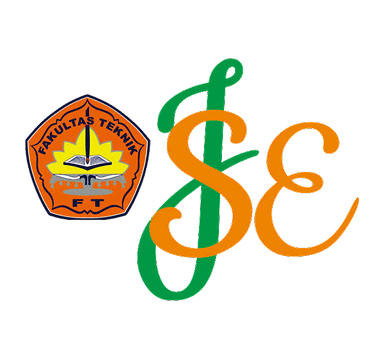Potential of Phytoremediation Using Kiambang (Salvinia molesta) for Treating Textile Industry Wastewater in Indonesia
Keywords:
phytoremediation plants, chromium (cr), kiambang, textile wastewaterAbstract
This study aims to evaluate the effectiveness of phytoremediation using plants in reducing chromium (Cr) levels and modifying pH in batik wastewater. The research was conducted using three experimental tanks: Control Tank (without plants), Tank 1 (with 8 plants) and Tank 2 (with 16 plants). The results showed that in the control tank the pH fluctuated and reached 8.1 on the 9th day, while in tank 1 and tank 2 the pH was more controlled with peak values of 7.9 and 8.2 respectively. The most significant reduction in chromium levels occurred in tank 2, with treatment efficacy reaching 70% on day 9, compared to 45% in tank 1 and 10.5% in the control tank. These results indicate that phytoremediation with more plants can significantly improve the treatment efficiency of batik wastewater, making it a potential and environmentally friendly method for industrial wastewater treatment. The phytoremediation method was carried out by observing variations in the number of plants using 3 reactor tanks. The first tank was a control tank, the second tank (BR2) contained 8 plants and the third tank (BR3) contained 16 plants. Samples were taken on days 3, 6 and 9. The results showed that the highest effectiveness in reducing total chromium (Cr) levels occurred in the third tank (BR3) on day 9, with a reduction of 70%.
References
[1] D. Hariani, E. Eliza, and D. Pratama, “Study of Creative Industry Development Based on Pekalongan Batik Culture,” in Proceedings of 1st Workshop on Environmental Science, Society, and Technology, WESTECH 2018, December 8th, 2018, Medan, Indonesia, 2019.
[2] G. Ginting, I. J. Dewi, I. Maesaroh, and M. Maria, “Development concept and strategy for creative tourism of community-based tourism destinations in Yogyakarta,” Ilomata Int. J. Manag., vol. 4, no. 1, pp. 58–72, 2023.
[3] N. Herlina and A. Khairani, “Study of anaerobic biofilter tofu wastewater treatment with bioball media and phytoremediation by kiambang (salviniamolesta),” in IOP Conference Series: Materials Science and Engineering, 2020, vol. 801, no. 1, p. 12050.
[4] M. Rafati, M. Pazouki, H. Ghadamian, A. Hosseinnia, and A. Jalilzadeh, “Effect of operating parameters on the performance of wastewater treatment plant (Case study: The south of Tehran wastewater treatment),” Adv. Environ. Technol., vol. 4, no. 4, pp. 211–221, 2018.
[5] G. L. Karia, R. A. Christian, and N. D. Jariwala, Wastewater treatment: Concepts and design approach. PHI Learning Pvt. Ltd., 2023.
[6] R. Dehghani, M. B. Miranzadeh, A. M. Tehrani, H. Akbari, L. Iranshahi, and A. Zeraatkar, “Evaluation of raw wastewater characteristic and effluent quality in Kashan Wastewater Treatment Plant,” Membr. Water Treat., vol. 9, no. 4, pp. 273–278, 2018.
[7] S. Liu, B. Yang, Y. Liang, Y. Xiao, and J. Fang, “Prospect of phytoremediation combined with other approaches for remediation of heavy metal-polluted soils,” Environ. Sci. Pollut. Res., vol. 27, pp. 16069–16085, 2020.
[8] N. Liu et al., “Non-phytoremediation and phytoremediation technologies of integrated remediation for water and soil heavy metal pollution: A comprehensive review,” Sci. Total Environ., vol. 948, p. 174237, 2024, doi: https://doi.org/10.1016/j.scitotenv.2024.174237.
[9] S. Rajendran et al., “A critical review on various remediation approaches for heavy metal contaminants removal from contaminated soils,” Chemosphere, vol. 287, p. 132369, 2022, doi: https://doi.org/10.1016/j.chemosphere.2021.132369.
[10] H. Ali, E. Khan, and M. A. Sajad, “Phytoremediation of heavy metals—Concepts and applications,” Chemosphere, vol. 91, no. 7, pp. 869–881, 2013, doi: https://doi.org/10.1016/j.chemosphere.2013.01.075.
[11] G. T. George and J. J. Gabriel, “Phytoremediation of heavy metals from municipal waste water by Salvinia molesta Mitchell,” Haya Saudi J. Life Sci., vol. 2, pp. 108–115, 2017.
[12] I. Munfarida, S. W. Auvaria, D. Suprayogi, and M. Munir, “Application of Salvinia molesta for water pollution treatment using phytoremediation batch system,” in IOP Conference Series: Earth and Environmental Science, 2020, vol. 493, no. 1, p. 12002.
[13] S. N. C. T. Astuti, J. Solihah, and S. Aisah, “The Potential of Salvinia molesta as a Copper Phytoremediation Agent based on Gene Expression Analysis,” J. Biotechnol. Nat. Sci., vol. 3, no. 1, pp. 30–40, 2023.
[14] F. Riandari and H. T. Sihotang, “Linear regression analysis to predict the length of thesis completion,” INFOKUM, vol. 9, no. 2, June, pp. 527–534, 2021.
[15] Y. Fransisca, M. A. Irfa’i, and S. A. Pratama, “The Factors Influenced the Undergraduate Thesis Completion Among Engineering Students,” in International Joint Conference on Arts and Humanities 2022 (IJCAH 2022), 2023, pp. 1019–1026.
[16] A. F. Sania and I. Yudianto, “Analysis of factors that influence taxpayers compliance in fulfilling taxation obligations,” J. Account. Audit. Bus., vol. 1, no. 2, pp. 17–27, 2018.
[17] V. U. Trivedi, M. Shehata, and B. Lynn, “Impact of personal and situational factors on taxpayer compliance: An experimental analysis,” J. Bus. Ethics, vol. 47, pp. 175–197, 2003.
[18] P. Gregory, Plant roots. Wiley Online Library, 2007.
[19] Z. Zulfa, C. T. Chia, and Y. Rukayadi, “In vitro antimicrobial activity of Cymbopogon citratus (lemongrass) extracts against selected foodborne pathogens,” Int. Food Res. J., vol. 23, no. 3, p. 1262, 2016.
[20] N. Izzah, “Pengaruh Struktur Modal, Profitabilitas dan Ukuran Perusahaan Terhadap Nilai Perusahaan Pada Perusahaan Infrastruktur, Utility dan Transportasi Yang Terdaftar Di Bursa Efek Indonesia (BEI) Periode 2011-2014,” J. Ilm. Maksitek, vol. 2, no. 3, 2017.
[21] K. K. Victor, Y. Séka, K. K. Norbert, T. A. Sanogo, and A. B. Celestin, “Phytoremediation of wastewater toxicity using water hyacinth (Eichhornia crassipes) and water lettuce (Pistia stratiotes),” Int. J. Phytoremediation, vol. 18, no. 10, pp. 949–955, 2016.
[22] P. I. Edaigbini, S. E. Ogbeide, and O. A. Olafuyi, “A comparative study of the performance of water hyacinth (Eichhornia crassipes) and water lettuce (Pistias stratiotes) in the remediation of produced water,” J Energy Technol Policy, vol. 5, pp. 1–9, 2015.
Downloads
Published
Issue
Section
License
Copyright (c) 2024 Irhamni, Chalid Mucharrabin, Teuku Muhammad Ashari, Arief Rahman, Husnawati Yahya, Vera Viena, Erdiwansyah (Author)

This work is licensed under a Creative Commons Attribution 4.0 International License.












